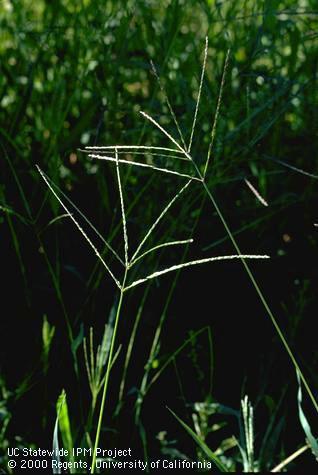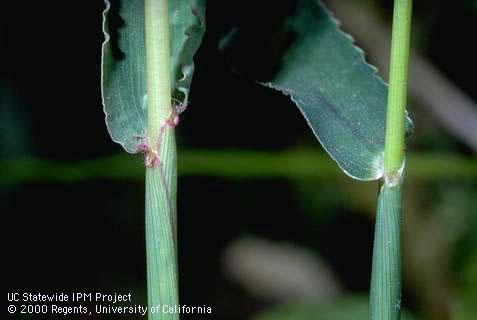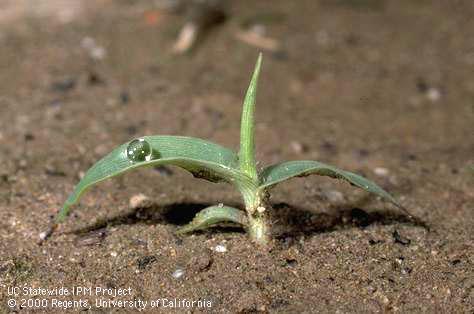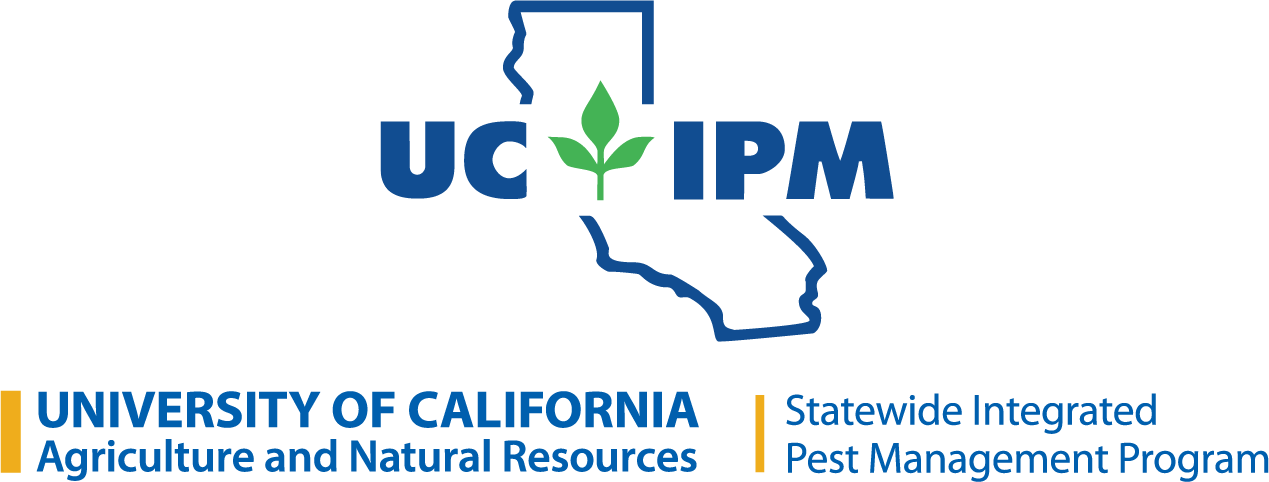Crabgrasses are summer annual grasses that generally grow in patches. They inhabit agricultural land and other disturbed sites. In California, large crabgrass, Digitaria sanguinalis, is more often found in gardens or landscape areas and smooth crabgrass, Digitaria ischaemum, is more often found in turf. They can provide good forage for livestock.
Habitat
Crop fields, orchards, vineyards, gardens, landscaped areas, turf, nurseries, pastures, roadsides, ditches, and other disturbed places.

Mature Plant
Stems mostly branch at the base, are flattened in cross-section, and grow upright or prostrate. Leaves are flat, rolled in the bud and have a prominent midvein. Sheaths are open and flattened. Lower stems may root at stem joints (nodes) and the root system is fibrous.

Collar Region
Ligules are membranous. There are no auricles.

Flowers
Their flower heads have spikelike branches in one, or more often, two whorls at the stem tip. The spikelets that originate from the main stem are found at 1/8 to 1/4 of an inch (0.3–0.6 cm) intervals. The branches are 1/2 to 2-1/2 inches (1.3–6.4 cm) long.

Related or Similar Plants
- Dallisgrass, Paspalum dilatatum
- Goosegrass, Eleusine indica
- Large crabgrass, Digitaria sanguinalis
- Smooth crabgrass, Digitaria ischaemum
- Witchgrass, Panicum capillare
- Bermudagrass, Cynodon dactylon
